Different Types of Rooftop Solar Mounting Systems
Different Types of Rooftop Solar Mounting Systems
Solar mounting structures play a pivotal role in enhancing the effectiveness of solar power systems, whether for large-scale utility projects or smaller rooftop setups. By positioning solar panels at the optimal angle, these structures are key in optimizing energy production.
Before installing solar panels on your rooftop, it's important to understand the various solar mounting options. Several factors need to be considered, including the roof's age, structural integrity, access to equipment, and necessary setbacks for fire and life safety regulations. This article will cover the different types of rooftop solar racking systems and how to choose the right one for your solar installation.
1. Flat Roof Solar Mounting Systems
Flat roof solar refers to the installation of solar panels on a roof with a pitch of approximately 1-10 degrees. The primary concern with flat roof installations is the roof's weight capacity. Here are two common types of solar mounts for flat roofs:
1.1Ballasted Racking Systems
Ballasted racking systems are suitable for flat roofs with a slope of less than 7 degrees and do not typically require roof penetrations. They add approximately 3-7 PSF of weight to the roof. In areas where the roof cannot support this added weight, mechanical attachments can be used. With this type of system, solar modules are typically installed with a tilt of 5, 10, or 15 degrees.
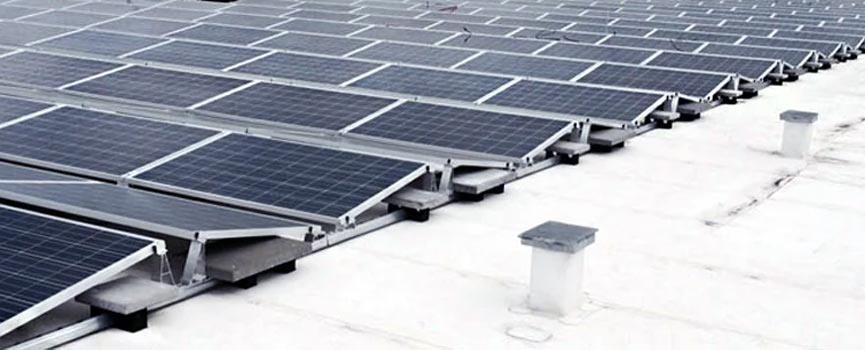
1.2 Metal Triangular Elevated Mounting Systems
Metal triangular elevated mounting systems are designed for flat roof structures and secure solar panels firmly in place. They are installed directly on the roof or pre-made concrete cement blocks. These triangular frames accommodate various types of panels and allow for angle adjustments (5° to 45°) to optimize solar panel performance.
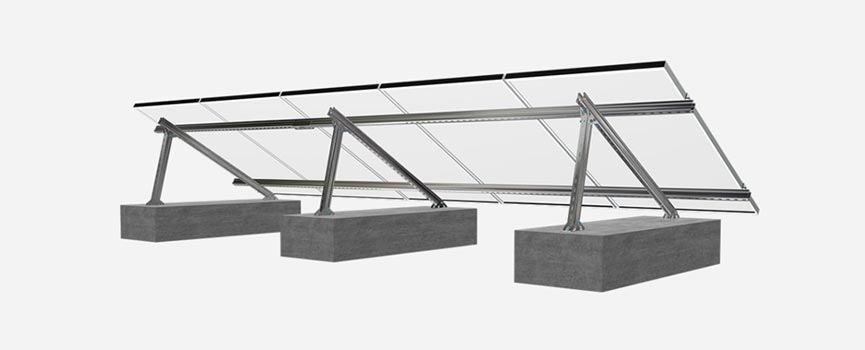
2. Sloped Roof Solar Mounting Systems
Most houses have sloped roofs, requiring solar panel mounts to adjust panels to an inclined position. Manufacturers offer the following options:
2.1 Rail-Less Mounting
Rail-less mounting systems are becoming increasingly popular. They consist of clamps, EPDM rubber, and screws that directly attach solar panels to the sloped roof without rails.
Honunity's rail-less solution is the most cost-effective option for sloped roofs, saving on racking system materials and offering maneuverability. Solar panels can be placed in either landscape or portrait orientation without affecting the overall system, as long as tilt and orientation remain consistent. This allows for more efficient use of space compared to rail systems, which require longer distances between panel strings. Additionally, the compact design reduces transportation costs by eliminating the need for long rails.
2.2 Railed Mounting
Railed mounting systems are one of the most common rooftop solar mounting structures. They consist of a set of rails attached to the roof, with each panel secured to the rails via clamps. The rails are then anchored to the roof with bolts and screws.
2.3 Shared-Rail Mounting
Shared-rail mounting systems function similarly to railed systems but require fewer rails. For two solar panels, a railed system typically needs four rails, while a shared-rail system needs only three. The panels share a central rail and use two edge rails, reducing installation time, cost, and the number of roof penetrations.
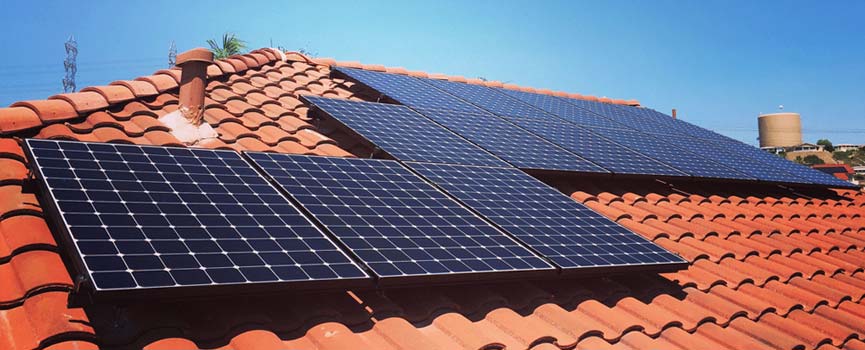
3. Metal Roof Solar Mounting Systems
For commercial solar installations, metal roof mounting systems are a common and effective solution.
3.1 Trapezoidal Roof Mounting
Trapezoidal metal roofs are prevalent on many commercial and outbuildings. Installing solar panels on trapezoidal metal roofs is one of the most cost-effective and time-efficient methods for solar deployment. The mounting process is similar to that of an on-roof system, but the rails are secured to the roof ridges using self-tapping screws, keeping the solar panels close to the roof to minimize wind impact. The rubber backing on the clamps ensures the system's waterproofing.
3.2 Standing-Seam Mounting
Standing seam roofs typically offer the lowest installed cost per watt due to the inexpensive racking systems. These systems attach to the roof seam without penetrating the roof, allowing for flush or tilted panel mounting. Higher tilts increase production but also increase costs and require spacing between rows.
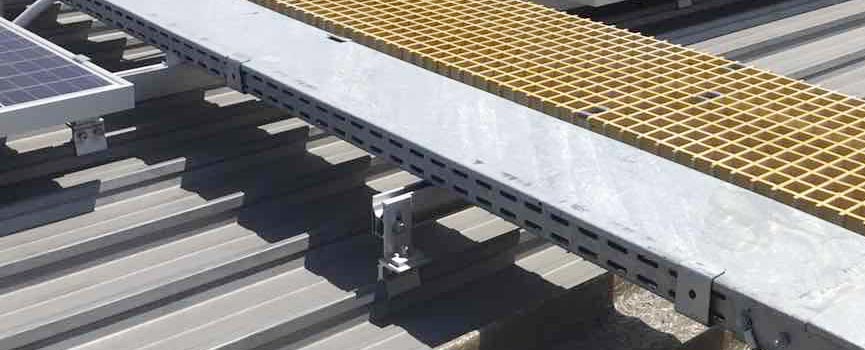
3.3 Corrugated Roof Mounting
Corrugated metal roofs, commonly found on agricultural structures, can pose installation challenges due to the roof's strength limitations. Additional mounting attachments are required to penetrate and secure the mounting system to the roof. Flashing and leak-proof components are essential to prevent water damage.
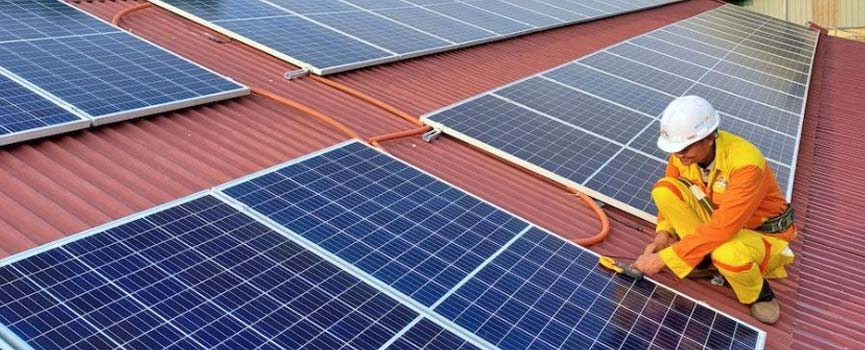
What Does Honunity Offer?
With over a decade of experience manufacturing a wide range of solar PV mounting systems, Honunity offers design flexibility, aesthetic variations, and enhanced solar generation. Honunity's comprehensive PV mounting solutions include rooftop, carport, fixed-tilt ground mount. Healthy multi-MW stock levels and a growing team enable fast and efficient customer service.

